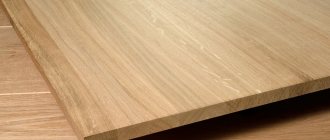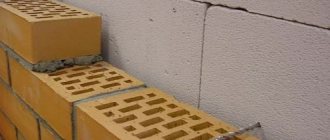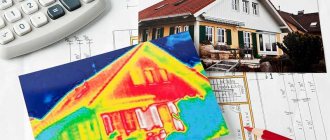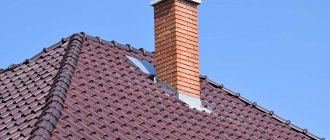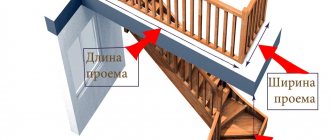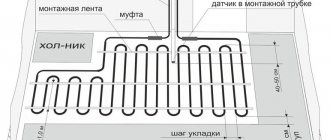Electrical equipment does not operate at full capacity all the time. This obvious fact can be understood using an everyday example. The lighting in the apartment is not turned on 24 hours a day. We use the iron only when we need to iron clothes. The kettle only works when you need to boil water. The situation is similar when it comes to electricity consumption in public and industrial buildings. Thus, the concept of installed and consumed (calculated) power is familiar to everyone since childhood. When designing the power supply of facilities, the non-simultaneous operation of equipment is taken into account using reduction factors. There are three reduction factors with different names, but their meaning is the same - demand factor, non-simultaneity factor, utilization factor. By multiplying the installed power of the equipment by one of these coefficients, the calculated power and the calculated current are obtained. Based on the design current, protective switching equipment (automatic circuit breakers, circuit breakers, RCDs, etc.) and cables or busbars are selected.
Pcalc = K×Pust, where Pust is the installed capacity of the equipment, Pcalc is the estimated power of the equipment, K is the demand/simultaneity/use coefficient.
When using this seemingly simple formula in practice, one is faced with a huge number of nuances. One of these nuances is the determination of the demand coefficient in panels that supply different types of loads (lighting, sockets, technological, ventilation and plumbing equipment).
The fact is that the demand coefficient depends on several parameters:
- Power;
- Load type;
- Type of building;
- Unit power of the electrical receiver.
Accordingly, when designing group and distribution networks, as well as electrical panel diagrams, this must be taken into account. Group networks (cables supplying end consumers) should be selected without taking into account the demand coefficient (the demand coefficient must be equal to one). Distribution networks (cables between switchboards) should be selected taking into account the demand factor. Thus, calculating the demand coefficient for switchboards with mixed loads brings additional difficulties and increases the complexity of the calculations.
Let's look at how the calculation of electrical loads is implemented in DDECAD using the example of a switchboard with a mixed load.
EOM power distribution network project for office workplaces
Details Category: Electrical project.
EOM We developed design documentation for the electrical network, connecting workplaces in an office building .
Abbreviated name of the system: ERS. The ERS is designed to distribute electricity from uninterruptible and general power supply panels to cross-connect consumers, security system equipment, computer equipment and household consumers of automated workstations (AWS) of the designed building. The main purpose of creating an EDS is to provide an automated banking system, communications and telecommunications in the OJSC building, electricity of appropriate quality with acceptable reliability indicators (in accordance with GOST R 54149-2010). Requirements for the electrical power distribution system for the categorization of this group of consumers, the battery life of the system, are taken into account when developing the uninterruptible power distribution network of the building and are not considered in this section of the working documentation. The initial data for design are:
— Special technical conditions for the design of fire protection for the administrative and banking complex building;
— Technological specifications for office premises, IT premises, MMS, etc.;
— Architectural and technological layouts of the building.
When creating the EPC automated workplace, only technologies and hardware and software approved for use on the territory of the Russian Federation should be used.
Result
As a result, we obtain a correctly calculated demand coefficient for the shield and the correct calculated powers and currents in the group network.
Next, DDECAD users continue to fill out the calculation table, which automatically calculates short-circuit currents, voltage losses (drops), and RCD leakage currents. After pressing one button, a single-line diagram of the shield is automatically obtained in AutoCAD.
Subscribe and receive notifications of new articles by e-mail
Residential lighting groups
The group line of an apartment is most often designed as single-phase. Exceptions may be apartments with three-phase four-wire inputs.
A prerequisite for the design (installation) of lighting groups is the installation of protection devices on all phase conductors at the beginning of the group circuit. Installation of protection devices on neutral working conductors is prohibited (PUE6.2.11).
In single-phase lighting groups, it is prohibited to combine the neutral working conductors of the working and emergency lighting groups. However, you can use a common neutral conductor in groups of working lighting if they follow common routes. It is also permissible to combine the working zeros of emergency and evacuation lighting.
Main types of sockets
Installation of overhead sockets is carried out with open electrical wiring. The wires are laid along the wall or ceiling. The wires are routed into the socket housing through the hole on the side to the terminals. The sockets themselves are secured with self-tapping screws. You can replace such sockets without damaging the wall covering, plus you can replace old sockets with European ones without changing the socket.
Built-in sockets differ from overhead sockets in that during installation they are recessed into the walls. This installation method is chosen in case of hidden electrical wiring. There are also built-in sockets with protective shutters. This is done to protect children from electric shock.
If you need to frequently insert a plug in and out of an outlet, you will need outlets with a push-button release button. This will protect the socket from wear and tear and the wiring from damage.
There are sockets where the contact wires are fixed with screws screwed into the plate. Quite simple and popular devices today. Some outlets come with indicator lights to make them easy to find in the dark at night.
Sometimes the location of electrical appliances in the apartment and the wiring diagram require special nuances when installing sockets. For example, floor and window options. In the first case, the socket will fit perfectly into any interior. It has a retractable design.
The window rosette is mounted directly into the glass, and the energy for its operation is provided by the sun's light. Quite expensive and at the same time advanced equipment. As practice shows, the high costs of window rosettes gradually pay off over time.
In kitchens, especially near the TV, it is now fashionable to install a whole block of sockets. They can connect several household appliances at once, thus minimizing the use of extension cords. Speaking about double sockets with two sockets, it is necessary to note that their mechanical part is not very reliable.
There are also outlets with mechanical or digital timers that turn on and off according to a program you set. The main purpose of such sockets is to save on electricity and reduce the load on power plants during peak hours of the power grid.
A new technology is sockets controlled via WiFi and GSM modules. Such sockets are most often included in the Smart Home system. You can not only set a timer on them to turn them on and off, but also turn off the power to electrical appliances in your house and apartment using remote control.
If we talk about industrial and construction sites, then they use power-type sockets designed to turn on a welding machine or a concrete mixer.
Read also
AT THE CONCENTRATION OF TECHNOLOGY AND DESIGN: LEGRAND ANNOUNCES INNOVATIVE ELECTRICAL SERIES BTICINO LIVING NOW
A new premium series of electrical installation products from the BTicino brand in high-tech style - BTicino Living Now will be available for sale in the first half of 2021.
ABB distribution boxes
ABB has released a series of updated distribution boxes (AP10, AP9R, AP9V), which are superior in properties to the previous one.
Atlas De series from Schneider Electric!
Geometry, rigor and conciseness - these are the main features of the Atlas De series from Schneider Electric! Switches in this series are an excellent solution.
Source
Location of connection points and installation
The main task is to carry out all the rearrangements correctly so that in the future they do not lead to the formation of a “jungle” of wires. Sockets are located near the relevant technical devices or in the walls where they will be most frequently connected. A classic office set is a combination of RJ-11 and RJ-45 in one unit. With this connection, you can simultaneously establish telephone and Internet connections for one workplace.
Wall/interior installation is largely the same as installing a conventional electrical outlet. The main nuance is the connection of the network cable and the placement of its 8 cores along the terminals, which are pre-designated with identical colors or are described in the instructions.
A reasonable option for carrying out installation work is to call a specialist who will have the necessary equipment with him:
- tools for installing a socket on/in the wall;
- crimping pliers for preparing the host connection cable;
- the cables themselves, etc.
In the case of other described types of computer sockets, you can experiment. For example, HDMI or minijack 3.5 connectors in one room can transmit a signal to the next room through a through cable.
Socket design and parameters
The design of the socket includes a block with contacts, a cover with a screw and a socket box. The block consists of contacts (zero and phase, plus grounding), terminals to which the wires are connected and mounting tabs.
When choosing an outlet, first of all pay attention to its parameters such as current, degree of protection and voltage. All these characteristics are indicated on its body. Let's start with the current. The current rating is the current that the outlet can withstand over a long period of time. Typically sockets are rated at 16A.
The rated voltage is the voltage at which the outlet can function properly. For household sockets, this voltage is 220 V. To calculate the rated power for the socket, you need to multiply the rated current value by the rated voltage.
The letters IP and two numbers are used to indicate the degree of protection of an outlet. The first number indicates how well the outlet is protected from dust, the second - from moisture. Most household sockets have a degree of protection of IP20.
The internal mechanism of the socket is made in the form of a module that can be installed in a variety of sockets. The top overlay can be anything, in this case. Both the cover and the module are made of special plastic that acts as a dielectric.
Such plastic must be resistant to fire and external mechanical influences. That is, roughly speaking, it must be durable and heat-resistant. In turn, electrodes for sockets are produced in the form of springy sockets.
Color range of sockets
The color of the rosettes is not the most important parameter when choosing, but it’s worth a few words. As you know, white sockets are a universal option; they will suit a wide variety of interiors.
It is somewhat more difficult with cream-colored rosettes, which fit into interiors where there are yellow, brown and red shades. You can also change the color of the sockets using replaceable inserts. In any case, the paint on the inserts may peel, and this must also be taken into account.
The same applies to painted sockets, which are also not cheap. From a design point of view this is a very attractive solution, but from a practical point of view it is not.
And finally, if you are the owner of a country house, the interior of which includes wooden materials and antique elements, retro-style sockets may be your solution.
Also, recently there are many design solutions for lovers of a more futuristic interior, many different shapes and colors, including those with LED lights and inserts.
As mentioned above, LED indicators and inserts can also perform a purely practical function - they are easy to spot in the dark if you wake up in the middle of the night.
Rules for purchasing computer sockets
A home or office workspace remodeler should have a basic understanding of the market. Best products:
- made of good materials (odorless, durable), which applies to both plastic and metal;
- are distinguished by high build quality;
- come with instructions, etc.
Our assortment includes popular brands: ABB, Legrand, DKC, IEK, etc. All manufacturers value their reputation, and we value our authority, so we offer products that meet the above requirements. If the client knows what he wants, then the ELEVEL assortment will contain suitable models and prices.
Thank you for your attention and the right choice!
Safety sockets
Such sockets are needed to de-energize an electrical appliance in the event of a current leak. A special built-in sensor is responsible for this in sockets. Let's take the most common example - when you are drying your hair and drop the hairdryer on the floor. In this case, the choice of outlet is based on the correct determination of the load current.
Sockets are available with or without grounding. The latter are rarely found in modern apartments, since there is always a ground loop there. The presence of this circuit is required in the kitchen or bathroom, in the office where there is a computer, video and audio equipment.
Socket with cover
The bathroom is also worth mentioning separately. To protect against moisture, sockets with covers are installed there. To prevent moisture from getting inside, cover the entire area of the outlet with a lid.
And so, for connecting household appliances, there are specialized types of sockets, which can be either built-in or overhead, with a different number of connectors. Whether for telephones, digital and computer equipment, radios and satellite dishes.
If you are going to approach the issue of choosing an outlet as meticulously and scrupulously as possible, consult with specialists on what types of outlets are most suitable for certain electrical appliances.
Computer socket and its varieties
When connecting modern computers and peripheral devices, special RJ-45 sockets are used. Using this connector, a number of problems related to the transmission of information signals in computer networks are solved.
Important! Externally, a computer socket is similar to a telephone socket. However, the second connection standard is labeled RJ-11. The key difference is the number of pins: 4 for the telephone cable and 8 for the computer cable. There are enough such products in our catalog.
Classic computer sockets are represented not by a single output, but by a minimum of 2 to 4 connectors. Using a pair of such outputs, you can organize home access to the Internet by conveniently laying cables. The twisted pair cable from the provider will be fed into the device unit itself, and the cables will go from the socket connectors to the hosts (computers, laptops, SMART TV, etc.).
Technically, such sockets are classified according to the parameters of the information flow passed through them:
Like regular sockets, such devices can be built-in or overhead. There are also one-piece and dismountable kits. The latter imply the possibility of replacing internal modules to change the parameters of information transmission within the network.
Some of the most popular products in our range:
- DKC In-Liner (assembled box with two RJ-45 connectors, cat. 5e);
- IEK ITK (wall socket cat.6 with 2 RJ-45 ports).
When equipping office outlets, other sockets can be useful (examples from our catalog are given):
- telephone (the RJ-11 standard mentioned above) - Legrand DIY Celiane;
- HDMI socket (for transmitting digital video audio signal) - Legrand Mosaic with extension cable;
- USB connector - BT LL (popular computer port with wall mounting option);
- VGA socket (video signal transmission) - Legrand Mosaic with a 1-meter cord.
- minijack 3.5 module (for easy connection of acoustic installations) - Legrand Mosaic.
By selecting all these devices in the required quantity, you can comfortably re-equip workplaces, increasing reliability and safety.
